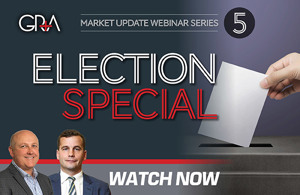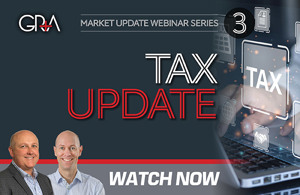
PROVISIONAL TAX
To give you some background, provisional tax is a tax that businesses and the self-employed must pay in instalments on their estimated taxable income for the year ahead, if they had more than $2,500 residential income tax (RIT) to pay on their last income tax return.
The problem with this is it can be hard for businesses to forecast their taxable income far in advance. If they overpay provisional tax, it affects their cash flow and reduces the money they can invest in their businesses. If they underestimate provisional tax they face use-of-money interest (UOMI) charges and possible penalties. The penalties can be 5% of the unpaid tax in the first month, plus 1% for each month payment is outstanding.
TIMELY PAYMENT OF PROVISIONAL TAX
From 1 April 2018, businesses and self-employed taxpayers with a turnover of less than $5 million will be able to opt in to the AIM, which is a new 'pay-as-you-go' system for provisional tax. This new option drops the estimation part and instead works out your tax payments on an ongoing basis throughout the year.
The way it will work is every two months, at the same time your GST is calculated, your taxable income for that period will also be calculated.
Under AIM, the provisional tax payments will more accurately match income as it is earned, be made more regularly and be integrated into normal business practices.
UOMI won’t apply to taxpayers who choose this method and who pay their tax on time. Late payments of tax, however, may attract late payment penalties.
Paying tax as agent for shareholder-employees
The second measure the Government has announced to provide for more accurate and timely payment of provisional tax, is to allow a company which does not use AIM to make tax payments on behalf of shareholder-employees. This will potentially enable these shareholder-employees to be removed from provisional tax.
Under this approach, shareholder-employees in a company could be removed from the provisional tax rules for their salaries from the company. Tax credits would be received by the shareholder-employees to meet their tax liability.
Tax payments made on behalf of the shareholder-employees would be paid on the company’s provisional tax dates, not any provisional tax dates the shareholder-employees might have had.
CHANGES TO PROVISIONAL TAX TO INCREASE CERTAINTY
Broadly speaking, the current provisional tax rules generally require a taxpayer to meet their annual income tax liability by making three interim payments during the year.
Instalments can be calculated in the following ways:
• Standard (or “uplift”) method – provisional tax instalments are based on 105% of the prior year’s residual income tax (RIT) or 110% of the year before the prior year if the taxpayer has not filed their prior year’s tax return;
• Estimation method – the taxpayer estimates their provisional tax liability and pays instalments on that basis; or
• GST ratio method – provisional tax payments are based on a ratio of residual income tax to GST taxable supplies. This method is only available to a subset of provisional taxpayers.
The Government have announced that from 1 April 2017, non-individual tax payers along with individuals who use what is currently the most common method for calculating provisional tax – the standard or “uplift” method – won’t be subject to use-of-money interest if their tax liability for the year is under $60,000 and their tax is paid on time. For taxpayers with a tax liability above $60,000, and again who use the uplift method, use-of-money interest will only apply from the third and last instalment of provisional tax.
The 1% monthly late payment penalty will disappear. The immediate penalty that applies to late payments and the 4% penalty after a further week will remain, as will use-of-money interest on overdue tax.
SELF-MANAGEMENT AND INTEGRITY
Withholding at source systems impose an obligation on an independent third party (for example, an employer or financial institution) to withhold an amount of tax from a payment of income. Although the withholding tax rules for scheduler payments have not changed for many years, the labour market has undergone significant shifts. This means more self-employed people are working in industries not covered by the withholding tax rules. In addition, payments to companies are generally not subject to withholding tax under the scheduler payments rules.
The Government has announced a first step towards modernising the scheduler payment withholding rules, providing increased flexibility and addressing an area where compliance issues have arisen.
This means contractors can take into account their individual circumstances. If an accurate rate is chosen, contractors may no longer be forced into an “over-withholding” situation or an “under-withholding” situation that could see them liable for provisional tax. Contractors who aren’t currently subject to withholding tax rules will also be able to elect into this system, with the payer’s agreement.
Pay as you go for contractors – labour-hire firms
Withholding tax rules will be extended to contractors engaged through labour hire firms. This means that the labour-hire firm will be required to withhold from any payment it makes to its contractors. Withholding will apply to a labour-hire contractor regardless of the form in which the contractor structures their business. This removes the ability for the contractor to avoid withholding by structuring as a company. Contractors subject to the labour-hire rules must have their income reported to Inland Revenue via the employer monthly schedule.
Voluntary withholding agreements
Contractors not covered by the scheduler payment withholding rules are not currently able to have tax withheld on a payday basis. The Government has announced new rules to allow contractors to opt in to voluntary withholding agreements. This will allow those contractors who are not covered by any other withholding provision to opt in and obtain greater flexibility to manage their tax obligations.
MAKING THE SYSTEM FAIRER
The late payment of tax is currently subject to a series of late payment penalties, which are imposed from the first day the tax is overdue and accrue incrementally and indefinitely thereafter. Overdue tax incurs an initial 1% penalty one day after the due date, another one-off 4% penalty seven days after, and an incremental penalty of 1% for each month thereafter. Use of money interest (UOMI) is also imposed to compensate the government for not having the money available to them. It is applied one day after the due date and is calculated on a daily basis and does not compound. The longer the tax is outstanding, the more financial penalties are imposed. After two years, the penalties and use of money interest can accumulate to more than 50% of the original tax owed.
For new debts after 1 April 2017, the 1% ongoing monthly penalty will be scrapped for income tax, GST and some other payments. The immediate penalty that applies to late payments, and the 4% penalty after a further week, will remain. So will use-of-money interest on overdue tax.
If you have questions about these new rules, please contact your GRA Client Services Manager. If you are not already a client of GRA you can call the office on (09) 522 7955 or request a meeting to arrange an appointment with one of our consultants.
Comments
Testimonials
The whole course was great. Super informative. - David M - June 2017
Gilligan Rowe and Associates is a chartered accounting firm specialising in property, asset planning, legal structures, taxation and compliance.
We help new, small and medium property investors become long-term successful investors through our education programmes and property portfolio planning advice. With our deep knowledge and experience, we have assisted hundreds of clients build wealth through property investment.
Learn More








































